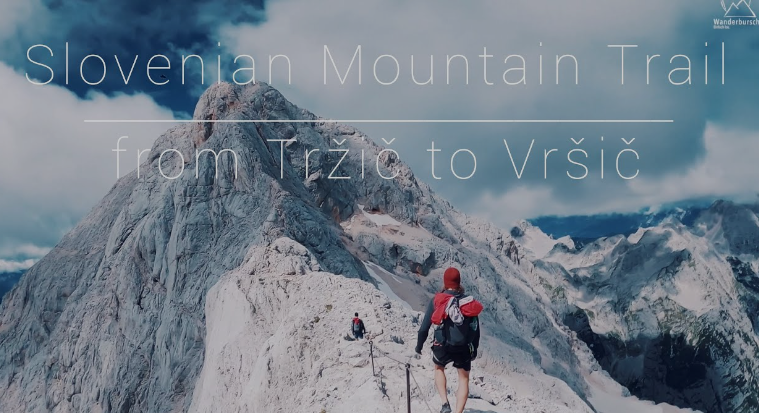Discover the Slovenia Mountain Trail

Table of Contents
About Slovenia Mountain Trail
Slovenia Mountain Trail Nestled in the heart of Europe, Slovenia boasts some of the most stunning and diverse landscapes on the continent. The Slovenia Mountain Trail, also known as the Slovenska planinska pot (SPP), is a testament to this natural beauty, offering hikers an unparalleled journey through breathtaking mountain ranges, pristine alpine lakes, and picturesque valleys. Stretching over 500 kilometers, this trail is not just a hiking route but a cultural and natural expedition that showcases the very best of Slovenia’s mountainous terrain.
History and Significance of the Slovenia Mountain Trail
The Slovenia Mountain Trail is one of the oldest and most renowned long-distance hiking trails in Europe. Established in 1953 by the Slovenian Alpine Association, it was created to celebrate Slovenia’s rich mountaineering tradition and to promote the natural beauty of the country’s landscapes. The trail traverses Slovenia from its northeastern corner in Maribor to the coastal town of Ankaran, covering diverse regions and offering hikers a glimpse into Slovenia’s unique geological and cultural heritage.
Highlights of the Trail
1. Pohorje Massif
The journey begins in Maribor, Slovenia’s second-largest city, and quickly ascends into the Pohorje Massif. This area is characterized by dense forests, serene lakes, and rolling hills. Hikers can enjoy the tranquility of the Pohorje peat bogs and the stunning views from Črni Vrh, the highest peak of the massif.
2. Kamnik-Savinja Alps
As the trail progresses, it enters the Kamnik-Savinja Alps, a dramatic mountain range known for its rugged peaks and alpine meadows. Key highlights include the Logar Valley, one of the most beautiful glacial valleys in Europe, and the ascent to Mt. Grintovec, the highest peak in the range, offering panoramic views of the surrounding landscape.
3. Julian Alps and Triglav National Park
No journey along the Slovenia Mountain Trail would be complete without traversing the Julian Alps and the renowned Triglav National Park. This section of the trail is perhaps the most iconic, featuring Mt. Triglav, Slovenia’s highest peak at 2,864 meters. The national park is a treasure trove of natural wonders, including the emerald-green Soča River, the stunning Lake Bohinj, and the awe-inspiring Savica Waterfall.
4. Karavanke Range
The Karavanke Range forms the natural border between Slovenia and Austria and offers hikers a different kind of alpine experience. This range is less rugged than the Julian Alps but no less beautiful, with its rolling hills, lush forests, and charming mountain villages. Notable peaks include Mt. Stol and Mt. Begunjščica, both offering spectacular views.
5. The Dinaric Alps and the Coast
The final stretch of the Slovenia Mountain Trail takes hikers through the Dinaric Alps and down to the Adriatic coast. This region is characterized by karst landscapes, with dramatic limestone formations and underground rivers. The trail concludes in the coastal town of Ankaran, where hikers can dip their toes in the Adriatic Sea, marking the end of an unforgettable journey.
Planning Your Hike
Best Time to Hike
The best time to hike the Slovenia Mountain Trail is from late spring to early autumn (May to October). During this period, the weather is generally stable, and the trails are free of snow. However, weather conditions can vary significantly depending on the altitude and region, so it’s essential to be prepared for changing conditions.
Trail Markings and Navigation
The Slovenia Mountain Trail is well-marked with red and white blazes and signs indicating directions and distances. A comprehensive guidebook and detailed maps are available from the Slovenian Alpine Association, which provide valuable information about the trail sections, huts, and points of interest.
Accommodation and Facilities
Hikers will find a network of mountain huts (known as planinske koče) along the trail, offering food and shelter. These huts vary in facilities, from basic refuges to more comfortable lodges with meals and hot showers. It’s advisable to book accommodations in advance, especially during the peak hiking season.
Gear and Preparation
Proper gear is crucial for a successful hike on the Slovenia Mountain Trail. Essentials include sturdy hiking boots, weather-appropriate clothing, a reliable backpack, a map, and a compass or GPS device. Additionally, hikers should carry sufficient food and water, as well as a first-aid kit and other emergency supplies.

Cultural and Natural Insights
Flora and Fauna
The trail offers a unique opportunity to observe Slovenia’s diverse flora and fauna. Hikers may encounter chamois, ibex, marmots, and a variety of bird species. The alpine meadows are adorned with wildflowers, including the rare edelweiss and the delicate Alpine rose.
Cultural Heritage
Throughout the hike, you’ll pass through charming villages and historical landmarks that reflect Slovenia’s rich cultural heritage. From traditional alpine architecture to centuries-old churches and castles, the trail provides a deep connection to the country’s history and traditions.

Sustainable Hiking Practices
Leave No Trace
Hikers are encouraged to practice Leave No Trace principles to preserve the natural beauty of the Slovenia Mountain Trail. This includes packing out all trash, minimizing campfire impacts, and respecting wildlife and other hikers.
Supporting Local Communities
Engaging with local communities along the trail by staying in local accommodations, buying local products, and respecting cultural norms helps support sustainable tourism and ensures the trail remains a cherished resource for future generations.
Conclusion
The Slovenia Mountain Trail is a journey through one of Europe’s most enchanting landscapes. From the lush forests of the Pohorje Massif to the rugged peaks of the Julian Alps, this trail offers a truly unforgettable hiking experience. Whether you are an experienced mountaineer or a casual hiker, the Slovenia Mountain Trail promises adventure, natural beauty, and a deep connection to Slovenia’s rich cultural and natural heritage.





